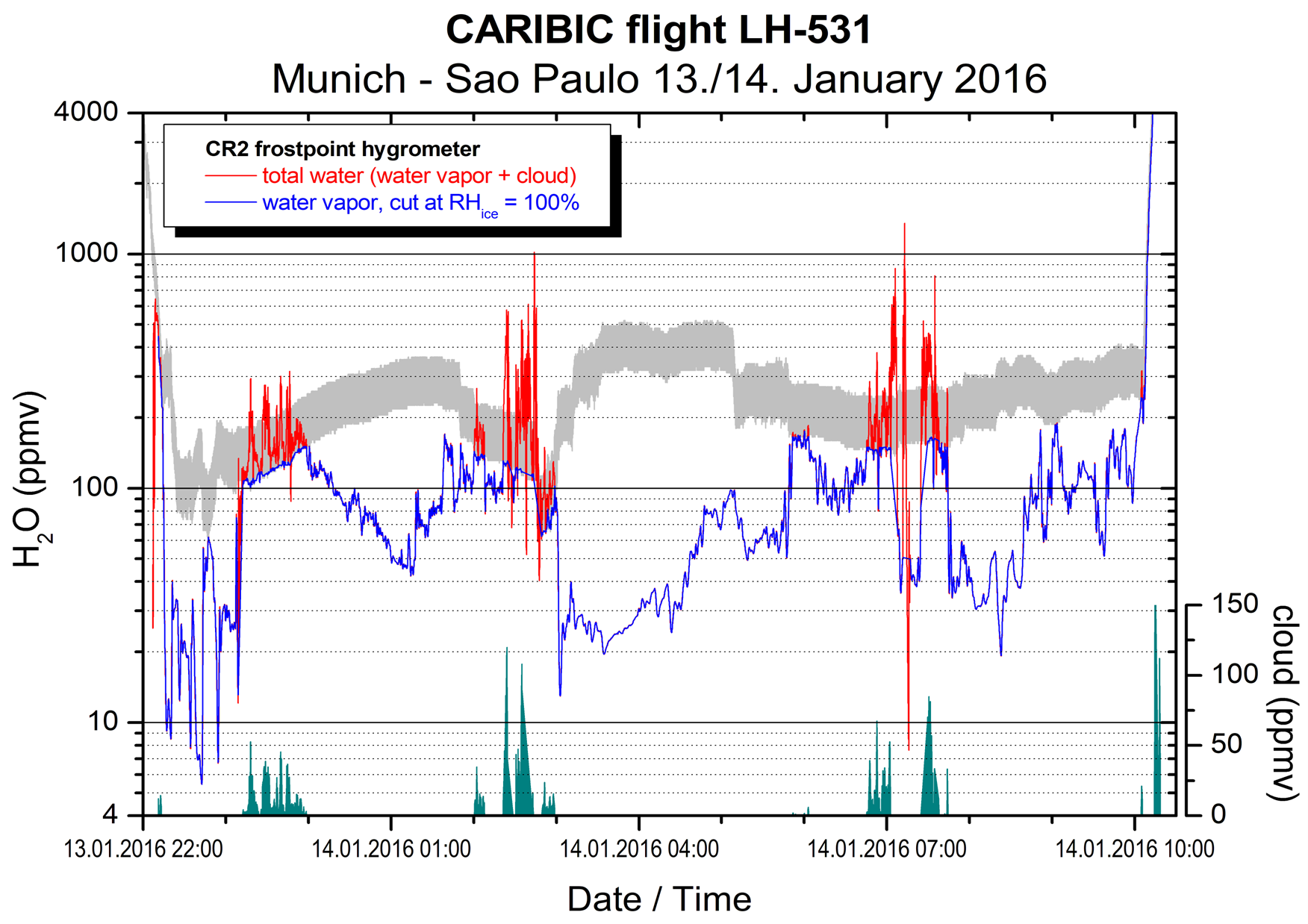Measurements of water vapor and cloud water/ice
Since 2005 we deploy a custom-made instrument that simultaneously measures water vapor (H2O) and cloud water/ice on board the IAGOS-CARIBIC passenger aircraft. It uses two measurement techniques:
- a 2-channel photo-acoustic laser spectrometer (PAS) developed at the Department of Op-tics and Quantum Electronics at the University Szeged (Hungary)
- a commercial chilled-mirror frost point hygrometer FPH (CR2, Buck Research, Boulder, USA), serving as calibration unit for the PAS laser spectrometer
A typical cross section is depicted on the figure below (right).

